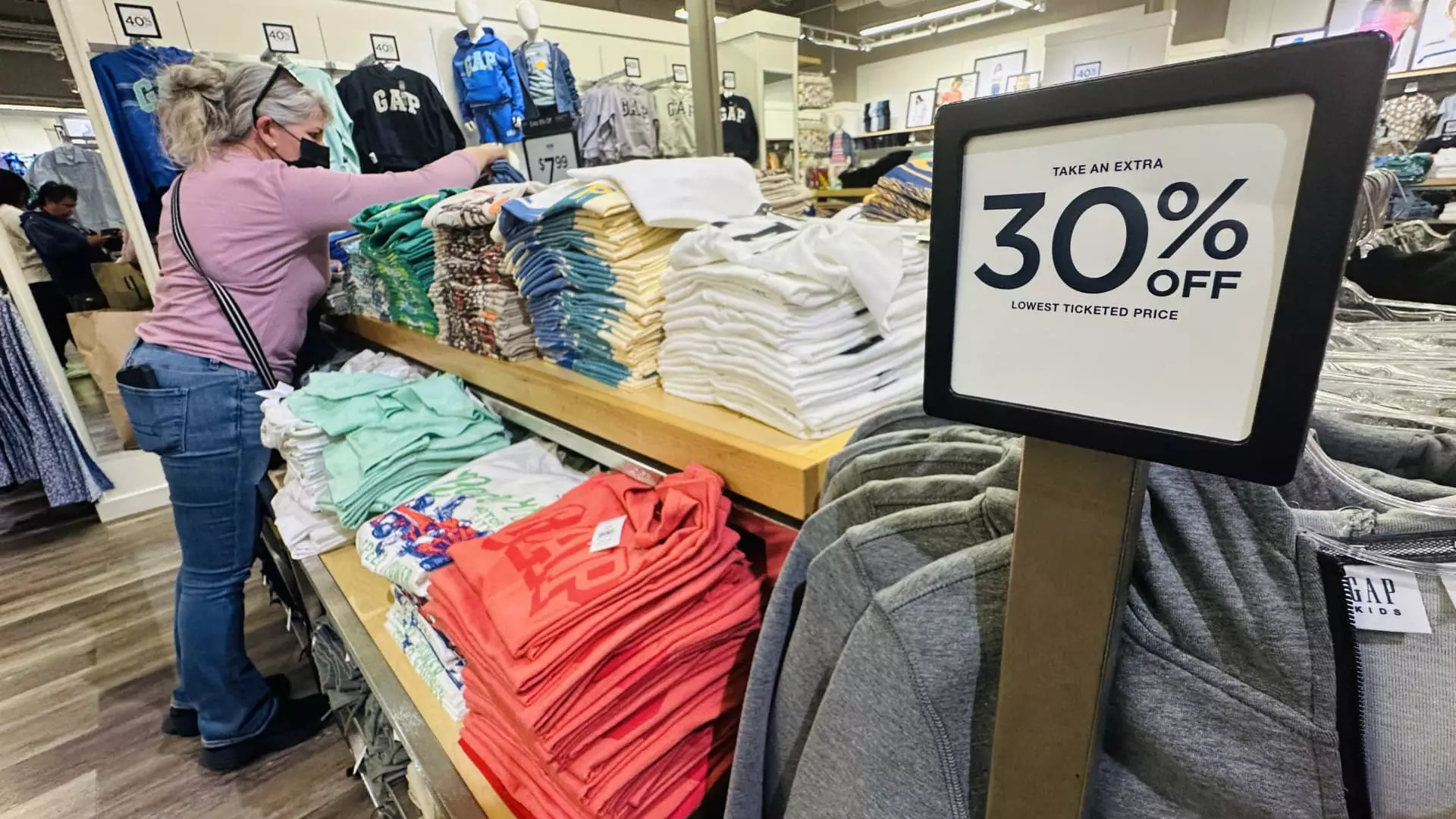The implications of new tariffs on imported goods are reverberating through the fabric of American society, with the apparel sector poised to bear the brunt of this economic conflict. As the U.S. grapples with escalating trade tensions, consumers find themselves caught in a tightening vise of financial strain, forced to navigate an increasingly convoluted marketplace. Analysts predict that the upcoming 2025 tariffs could push clothing prices up by an astonishing 64% in the short run, compounding what has already become a relentless inflationary ecosystem. The long-term outlook is scarcely more encouraging, with forecasts suggesting that apparel prices could remain a staggering 27% higher.
The heart of the problem lies in the sheer volume of imported clothing and footwear, with a staggering 97% originating from countries like China and Vietnam. This near-complete reliance on foreign production makes the U.S. apparel sector particularly vulnerable to tariff impositions. The Trump administration’s sweeping tariffs, particularly the recent 145% tax on Chinese imports, are a deliberate strategy to negotiate better trade practices, yet they ultimately act as a hidden tax on American consumers. For a nation already grappling with the weight of economic turbulence, this seems nothing short of a self-inflicted wound.
Consumer Behavior in the Face of Economic Pressure
As financial pressures mount, consumer behavior has started to shift dramatically. Recent surveys indicate that three-quarters of Americans have already adapted to rising prices by opting for more affordable clothing options, commonly referred to as “trade-down” behavior. While high-end labels may be out of reach, the proliferation of secondhand markets and imitation products offers a response to price hikes. In the eyes of many consumers, a less expensive alternative often represents not just a pragmatic choice but a necessity borne from the looming specter of inflation.
Additionally, the new tariff regime has disrupted the once-popular practice of duty-free imports, particularly for low-cost goods purchased from abroad. American consumers who previously relied on cross-border bargains from e-commerce platforms are now facing higher prices and fewer options. This shift has opened the door to a burgeoning secondhand market, where shoppers seek to circumvent tariffs by investing in pre-owned apparel. Interestingly, resale platforms have witnessed exponential growth, appealing particularly to younger generations who prioritize sustainability and budget-conscious shopping.
The Role of Counterfeiting in a High-Tariff Environment
As prices soar and genuine products become harder to afford, history suggests an unfortunate consequence: the rise of counterfeit goods. The more tariffs raise the prices of authentic products, the more opportunity arises for counterfeit operations to thrive within this chaotic landscape. Impersonations of popular brands might become commonplace as consumers seek shortcuts to high-status apparel. The agility of counterfeiters means they will adapt quickly to find paths around restrictions, leading to an influx of cheaply produced imitation products that undermine both brand integrity and consumer trust.
The tug-of-war between price and authenticity poses a unique challenge not just for consumers but also for the legitimacy of the fashion industry. A market flooded with fakes generates dangerous conditions wherein high-quality goods are devalued, forcing brands to make untenable choices to maintain relevance. The ironical truth is that while tariffs aim to protect American jobs, they might unintentionally empower unscrupulous entities that damage the very market they are meant to safeguard.
The Rising Tide of Resale and Re-commerce
Observing these changes, it’s worth noting how the rise of resale and re-commerce stands as a beacon of hope amid the turmoil. Consumers are increasingly open to exploring thrift shops, online resale platforms, and local alternatives in light of soaring prices. The projected growth of the U.S. resale market, estimated to reach an astonishing $291.6 billion by 2029, underscores a remarkable cultural shift. This growth is not merely a statistic; it signifies a new consumer loyalty to sustainability and practicality in a time of economic uncertainty.
The recent data paints an optimistic picture of a generation determined to subvert traditional retail paradigms. With younger consumers leading the charge, the appetite for secondhand fashion continues to surge. Experts predict that by 2029, resale could account for as much as 8% of total retail sales. However, the promise of this growth isn’t without its challenges; there simply aren’t enough secondhand garments available to meet rising consumer demand.
As the landscape of the American apparel market undergoes radical transformation, one thing is clear: the chaos stemming from tariffs isn’t limited to price hikes; it’s reshaping the way people shop, perceive value, and engage with fashion. The repercussions of the trade war extend far beyond economic figures and governmental decisions; they touch the very essence of consumer identity in America as it moves toward a new paradigm defined by resilience and resourcefulness.

